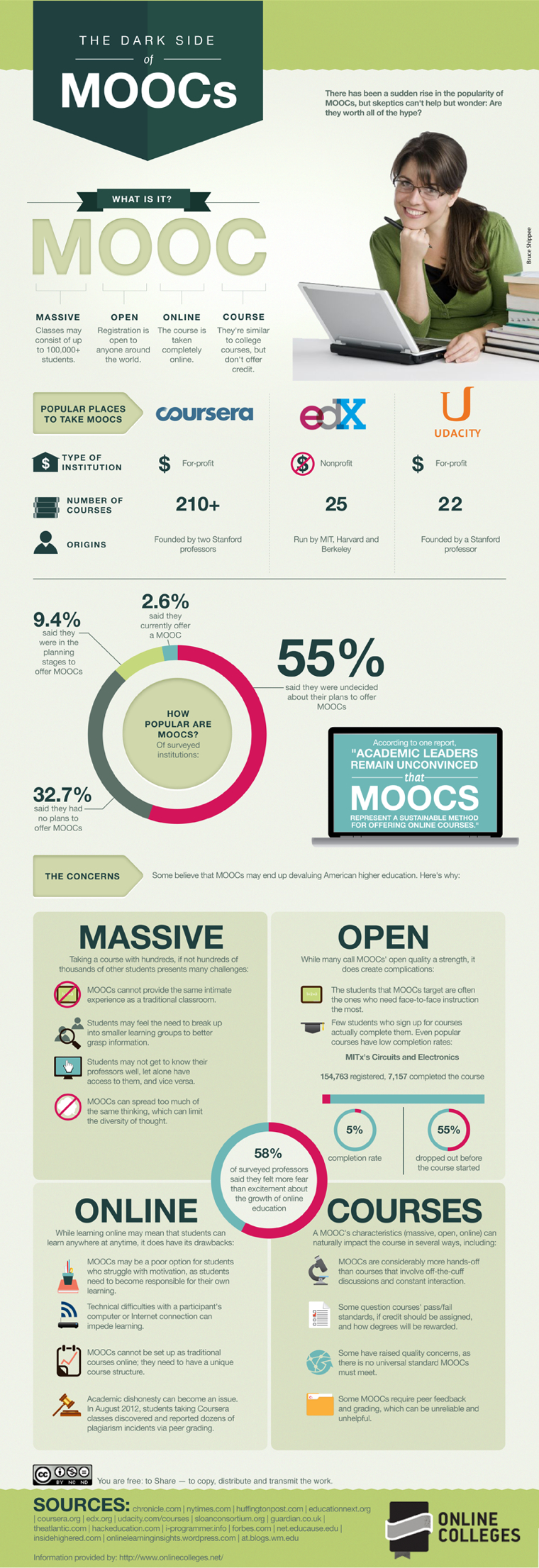Dark Side of the MOOC: Do the Challenges Outweigh the Advantages?
There are legitimate concerns surfacing about massive open online courses (MOOCs) as their popularity spreads far and wide. One of the main concerns is student engagement. Limited data exists on MOOCs, but of the information available, pass rates have been low and dropout rates have been high. This is obviously a concern and a thorn in the side of the MOOC community. The online news site Knowledge@Wharton recently featured an interview with Coursera co-founder Daphne Koller, in which she was asked about “participation, completion and dropout rates of this online population.”
This is what we see: Enrolling is easy. It's a matter of just clicking a button, and it's free. A lot of students do that. Then when it comes time for the course to actually begin, about 70% of students show up, possibly because those who do not attend have found their life has moved on, and they're now busy doing something else.
Of the ones who show up, we see a bifurcation of the population. There are students who come in and they are primarily there to watch the videos. Of those who start watching videos, about 30% to 40% watch the course to its completion, with a fairly constant drop off rate week-on-week as students get busy.
Then there is the second population: These are students who really do intend to take the course for real. We gauge that by seeing who submits the first assignment. If you submit the first assignment, you probably intend to take the class for real. The retention rate for this population is comparable: About 30% who start the first assignment will complete the last one.
In terms of what you might traditionally call "retention" -- that would be the number of students who submit the final assignment relative to the population who initially enrolled for the course. In those terms, we have a retention rate of 7% to 9%, depending on the course. But that's really the wrong way of looking at it because many of these students never really intended to seriously take the class in the first place.
Read MOOCs on the Move: How Coursera Is Disrupting the Traditional Classroom.
The infographic below breaks down each of the four parts of a MOOC — massive, open, online, course — to see where the weaknesses are in this model.









